The decline and near abandonment of Cairo, Illinois has been well-discussed and well-documented, as to some extent has what Ron Powers called its last great civic event, a four-year shooting war between its white and Black communities from 1967 to 1971. Perhaps no place in America suffered as protracted and violent a racial upheaval as Cairo, and the conventional wisdom is that these tragic years of shootings, arsons and boycotts destroyed the town. But as I saw earlier in the afternoon at Hickman, Kentucky, things just aren’t that simple. Hickman experienced none of the fire bombings, snipings, marches or boycotts that wracked Cairo, yet its downtown ended up looking largely the same as Cairo’s, which raises the important question as to whether Cairo experienced the severe racial conflict it did BECAUSE it was dying, rather than dying because it experienced the racial conflict. Perhaps it would be fairer to say that the conflict hastened the processes that were already occurring in Cairo. Either way, what has happened since is in every way a tragedy. Very little of Commercial Avenue remains at all, compared to 1987, when some of the buildings were still occupied and nearly all of them were standing. The city also seems devoid of people these days, compared to my visits back in my college days, when one could find pickup basketball games on side streets off of Washington Avenue. Most night clubs are gone from Commercial Avenue, although several remain, a rap club called Club Elite, a lounge called Mary G’s and something called the Cavalier Club. I didn’t even see many people in either of the city’s projects, the McBride Court (formerly Pyramid Court, which had been the scene of so much shooting in the 1970’s) or Elmwood Court. The boarded up Bennett School (which had been called Booker T. Washington prior to integration) was simply another sad and depressing sign of the town’s decline, as were the abandoned newspaper office, abandoned nursing home and abandoned hospital. What economic decline and racial conflict didn’t do, flooding did, with the most recent flood occurring in 2011. Arguably flooding has discouraged industry from locating in Cairo, and furthered the town’s death. While one views the ruins with a certain degree of shock and horror, and feels that something should be done to preserve what is left, it is likely that nobody will. Frankly nobody cares outside of Cairo, and chances are that few even care within Cairo. Probably there will soon be nothing left at all.
Cairo, IL: The Price of Racial Conflict?
ghost towns, PhotographyThe decline and near abandonment of Cairo, Illinois has been well-discussed and well-documented, as to some extent has what Ron Powers called its last great civic event, a four-year shooting war between its white and Black communities from 1967 to 1971. Perhaps no place in America suffered as protracted and violent a racial upheaval as Cairo, and the conventional wisdom is that these tragic years of shootings, arsons and boycotts destroyed the town. But as I saw earlier in the afternoon at Hickman, Kentucky, things just aren’t that simple. Hickman experienced none of the fire bombings, snipings, marches or boycotts that wracked Cairo, yet its downtown ended up looking largely the same as Cairo’s, which raises the important question as to whether Cairo experienced the severe racial conflict it did BECAUSE it was dying, rather than dying because it experienced the racial conflict. Perhaps it would be fairer to say that the conflict hastened the processes that were already occurring in Cairo. Either way, what has happened since is in every way a tragedy. Very little of Commercial Avenue remains at all, compared to 1987, when some of the buildings were still occupied and nearly all of them were standing. The city also seems devoid of people these days, compared to my visits back in my college days, when one could find pickup basketball games on side streets off of Washington Avenue. Most night clubs are gone from Commercial Avenue, although several remain, a rap club called Club Elite, a lounge called Mary G’s and something called the Cavalier Club. I didn’t even see many people in either of the city’s projects, the McBride Court (formerly Pyramid Court, which had been the scene of so much shooting in the 1970’s) or Elmwood Court. The boarded up Bennett School (which had been called Booker T. Washington prior to integration) was simply another sad and depressing sign of the town’s decline, as were the abandoned newspaper office, abandoned nursing home and abandoned hospital. What economic decline and racial conflict didn’t do, flooding did, with the most recent flood occurring in 2011. Arguably flooding has discouraged industry from locating in Cairo, and furthered the town’s death. While one views the ruins with a certain degree of shock and horror, and feels that something should be done to preserve what is left, it is likely that nobody will. Frankly nobody cares outside of Cairo, and chances are that few even care within Cairo. Probably there will soon be nothing left at all.








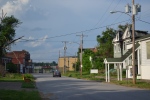





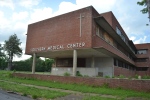




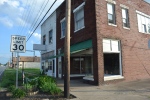




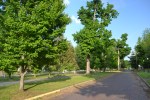












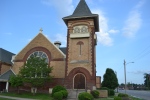




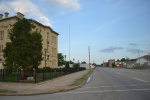
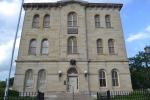






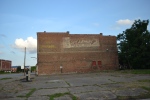














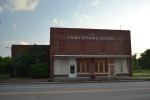

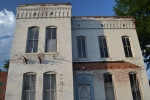
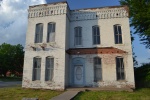







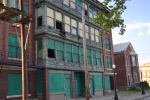




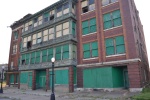


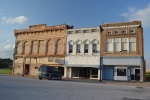

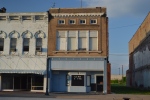














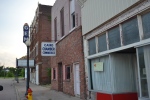


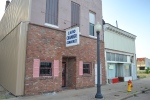














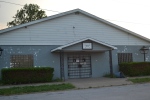



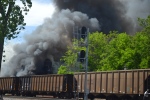




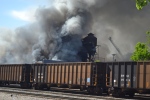



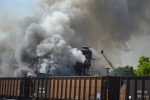



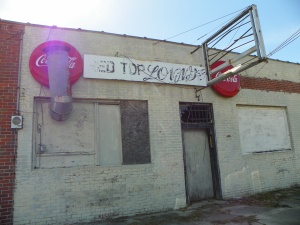









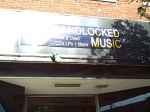
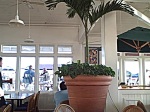

You must be logged in to post a comment.